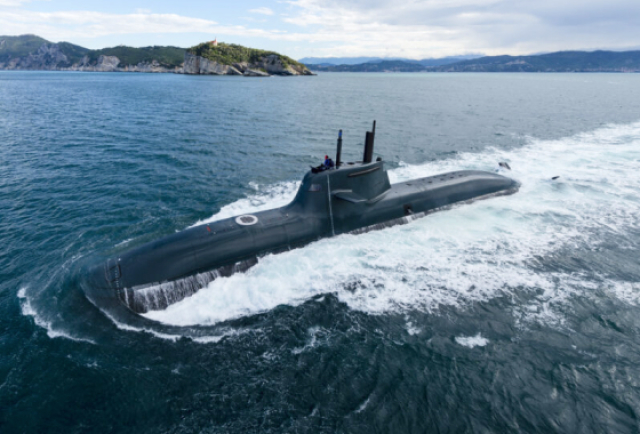TSAMTO, March 1. On February 26, the Italian company Fincantieri announced the signing of a contract with the European Organization for Cooperation in the Field of Weapons OCCAR for the construction of two new-generation submarines for the Italian Navy.
The contract, under which Fincantieri will act as the general contractor, includes an option to build two additional U212 NFS (Near Future Submarine) class submarines. The total cost of the contract for the construction of the first two ships, including the corresponding 10-year logistics support, is 1.35 billion rubles. euro. The agreement also includes the delivery of new simulators.
The project is a development of the U212A program, implemented jointly with the German ThyssenKrupp Marine Systems, as a result of which 4 Salvatore Todaro-class submarines were delivered to the Italian Navy from 2006 to 2017. Another 6 submarines were received by the German Navy.
Delivery of the first two submarines under the new contract is scheduled for 2027 and 2029. The first NAPL will be delivered 81 months after the contract is signed. The new U212 NFS will replace the four Impruvd Sauro-class submarines that are about to expire. The project also aims to support and further develop the know-how acquired by Fincantieri and maintain the technological leadership achieved by the company.
As reported by TSAMTO, currently in the combat composition of the Italian Navy consists of 8 submarines: four class "Impruvd Sauro" and four "Type-U212A".
The Type-212 (U212) non-nuclear submarine, known in Italy as the Salvatore Todaro class, was developed by the German company Howaldtswerke-Deutsche Werft AG (HDW) for the German and Italian navies.
The U212 NFS is a further development of the Salvatore Todaro class submarines. The submarines will be equipped with a new generation of control and control system, an updated air-independent power plant with Italian-made lithium-ion fuel cells, which will make them one of the most inconspicuous submarines in the world.
It is assumed that the improved design of the NPL will be distinguished by an elongated 1.2 m hull, as well as a number of other new technologies introduced in the second batch of submarines of the German Navy to increase fuel reserves. The new platform will also be equipped with an updated set of combat systems, a new configuration of combat information center, updated GAS, modern torpedoes and missiles.

